Manufacturer, Supplier & Exporter of
a wide range of Dyes, Pigments & Food Colours
Vat Dyes
Vat dyes are a type of water-insoluble dye that are commonly used on cellulosic fibers. These dyes include indigo and anthraquinone derivatives and are applied to the fiber in a soluble, reduced form before being oxidized back into their insoluble form within the fiber. Vat dyes are known for their exceptional light and wash fastness and can produce brilliant colours in a wide range of shades.
Vat dyes have a long history, originating in medieval Europe, and were named for the vats used in the fermentation and reduction of indigo plants. These dyes are still widely used today in various applications, including the dyeing of cotton, linen, and other cellulosic fibers, as well as in the production of denim.
To find the right Vat dye and dyeing procedure for your business, we invite you to explore one of the best Vat Dyes Manufacturers in India i.e. Megha International. We offer a diverse collection of Vat Dyes and consumables that cater to various requirements. Moreover, we keep pace with the advancements in digital textile printing techniques to ensure that our customers have access to the latest technologies. For detailed information on the product Download Vat Dyes PDF
Are you looking for Vat Dyes? Transform your materials into vibrant masterpieces!
Buy High quality Vat Dyes at Best Price - Megha International

Vat Dyes Manufacturing Process
The manufacturing process for vat dyes typically involves several steps.
First, the raw materials, such as indigo or other anthraquinone derivatives, are sourced and prepared for processing.
Next, the raw materials are mixed with various chemicals, including alkali, reducing agents, and oxidizing agents, to create a dye vat. The vat is then heated and maintained at a specific temperature to allow the reduction and solubilisation of the dye.
Once it turns into solubilised vat dyes, it is ready to be applied to the textile material. The textile material is typically pre-treated with a mordant to help the dye adhere to the fibers. The textile material is then immersed in the dye vat, where it absorbs the dye.
After the textile material has been immersed in the dye vat, it is removed and exposed to air. As the dye comes into contact with the air, it oxidizes and reverts back to its insoluble form, allowing it to bind to the fibers of the textile material.
Finally, the textile material is rinsed and washed to remove any excess dye and then dried.
The manufacturing process for vat dyes can vary depending on the specific dye being produced and the intended application. However, the basic steps outlined above are common to most vat dye manufacturing processes.
Types of Vat Dyes
Some common vat dyes examples include:
| VAT DYES | General | Fastness | |||||||||||||||||||
| 2% | Product Name | C. I. Name | CAS NO. | Vatting Temp °C | Dyeing Temp °C | Substanity | Levelling | Cross Dyeing | Hot Pressing | Hypochlorite | Light | Marcurising | Perride Bleach | Soda boil | Soda boil | Washing | VAT DYES uses | Price | MSDS | TFDS | |
| Allleration | Staining | ||||||||||||||||||||
| Vat Yellow 4 | Yellow 4 | 128-66-5 | 50 | 50 | H | H | 5 | 4 | 5 | (3-4) | 5 | (4-5) | (3-4) | 4 | 5 | 5 | Dyeing of cotton, silk, and wool fibers | ||||
| VAT ORANGE RK | Orange 1 | 3564-71-4 | 50 | 25 | H | H | 5 | 4 | 5 | (6-7) | 5 | 4 | (3-4) | (3-4) | 5 | 5 | Dyeing of cotton and silk fabrics, paper, and leather | ||||
| VAT VIOLET 2R | Violet 1 | 8004-87-3 | 50 | 60 | H | H | 5 | 4 | 5 | (6-7) | 4 | (4-5) | (4-5) | (4-5) | (4-5) | (4-5) | Dyeing of wool, silk, and cotton fibers | ||||
| VAT MAGENTA B | Violet 3 | 548-62-9 | 75-80 | 60 | H | H | 5 | 2 | 5 | (5-6) | 4 | (4-5) | (4-5) | (4-5) | (4-5) | (4-5) | Dyeing of wool, silk, and nylon fibers | ||||
| VAT JADE GREEN FFB | Green 1 | 128-58-5 | 50-60 | 60 | H | H | 5 | 1 | 4 | (7-8) | (4-5) | (4-5) | (4-5) | 5 | (4-5) | (4-5) | Dyeing of silk, wool, and cotton fibers | ||||
| VAT BLACK BB | Green 9 | NA | 60 | (6-80) | H | H | 5 | 5 | (4-5) | (7-8) | (4-5) | (4-5) | 3 | 3 | 5 | (3-4) | Dyeing of silk and wool fibers | ||||
| Vat Brown 1 | Brown 1 | 10114-58-6 | 50 | 50 | H | H | 5 | 5 | (4-5) | 7 | (4-5) | (4-5) | (4-5) | (4-5) | 5 | 5 | Dyeing of cotton, wool, and silk fabrics | ||||
| VAT BROWN RRD | Brown 5 | 2653-72-7 | 60-80 | 50-60 | H | M | 5 | 3 | 4 | (6-7) | 4 | (4-5) | (3-4) | (4-5) | (4-5) | 5 | Dyeing of cotton and silk fabrics | ||||
| Vat Blue 5 | Blue 5 | 16823-51-1 | 60 | 60 | H | M | 5 | 4 | (4-5) | (6-7) | 4 | (4-5) | (4-5) | (4-5) | (4-5) | 5 | Dyeing of wool, silk, and nylon fibers | ||||
| Vat Blue 16 | Blue 16 | 502453-61-4 | 60 | 60 | H | M | 5 | 1 | 4 | (6-7) | (4-5) | 4 | (3-4) | 4 | (4-5) | 5 | Dyeing of cotton and silk fabrics, and paper | ||||
| Vat Blue 18 | Blue 18 | 1324-54-5 | 50-60 | 50-60 | H | M | 5 | 1 | 4 | (6-7) | 4 | 5 | 4 | 4 | 5 | 5 | Dyeing of silk, wool, and nylon fibers | ||||
| VAT GREY 3B | Black 16 | 1328-19-4 | 80 | 80 | H | G | – | 5 | 5 | 7 | (3-4) | 4 | – | – | – | – | Dyeing of silk, wool, and nylon fibers | ||||
| VAT ORANGE RRTS | VAT ORANGE 2 | 1324-35-2 | 60-65 | 60-65 | M | NA | NA | NA | NA | NA | NA | NA | NA | NA | NA | NA | Textile dyeing, paper coloring, ink production | ||||
| ORANGE RF | VAT ORANGE 5 | 3263-31-8 | 60-65 | 60-65 | H | NA | NA | NA | NA | NA | NA | NA | NA | NA | NA | NA | Plastic coloring, wood staining, leather dyeing | ||||
| VAT GOLDEN ORANGE G | VAT ORANGE 9 | 128-70-1 | 60-65 | 60-65 | M | NA | NA | NA | NA | NA | NA | NA | NA | NA | NA | NA | Cosmetics, candle making, food coloring | ||||
| VAT YELLOW 3RT | VAT YELLOW 11 | 2172-33-0 | 60-65 | 60-65 | H | NA | NA | NA | NA | NA | NA | NA | NA | NA | NA | NA | Fabric printing, ceramic glazing, soap making | ||||
| VAT DARK BLUE BO | VAT BLUE 20 | 116-71-2 | 60-65 | 60-65 | M | NA | NA | NA | NA | NA | NA | NA | NA | NA | NA | NA | Denim dyeing, pottery decoration, art and craft projects | ||||
| VAT BLUE RCL | VAT BLUE 16 | 6424-76-6 | 60-65 | 60-65 | M | NA | NA | NA | NA | NA | NA | NA | NA | NA | NA | NA | Silk dyeing, tie-dye techniques, glass coloring | ||||
| VAT BROWN R | VAT BROWN 3 | 2475-33-4 | 50-55 | 50-55 | L | NA | NA | NA | NA | NA | NA | NA | NA | NA | NA | NA | Leather dyeing, wood finishing, basket weaving | ||||
| VAT BROWN 2G | NA | 420703 | 50-55 | 50-55 | M | NA | NA | NA | NA | NA | NA | NA | NA | NA | NA | NA | Hair dyeing, candle coloring, natural fabric dyeing | ||||
| VAT BROWN G | VAT BROWN 68 | 12237-38-6 | 60-65 | 60-65 | H | NA | NA | NA | NA | NA | NA | NA | NA | NA | NA | NA | Faux fur dyeing, upholstery, costume design | ||||
| VAT VIOLET FFBN | VAT VIOLET 13 | 4424-87-7 | 60-65 | 60-65 | H | NA | NA | NA | NA | NA | NA | NA | NA | NA | NA | NA | Nail polish production, plastic molding, resin coloring | ||||
| VAT RED 6B | VAT RED 13 | 4203-77-4 | 60-65 | 60-65 | M | NA | NA | NA | NA | NA | NA | NA | NA | NA | NA | NA | Textile printing, woodblock printing, screen printing | ||||
| VAT OLIVE GREEN B | VAT GREEN 3 | 3271-76-9 | 60-65 | 60-65 | M | NA | NA | NA | NA | NA | NA | NA | NA | NA | NA | NA | Soap coloring, candle making, bath bomb production | ||||
| VAT BLACK CH | Vat Black 16 | 1328-19-4 | 60-65 | 60-65 | M | NA | NA | NA | NA | NA | NA | NA | NA | NA | NA | NA | Shoe dyeing, rubber production, carbon paper manufacturing | ||||
| VAT JADE GREEN 2G | VAT GREEN 2 | 25704-81-8 | 60-65 | 60-65 | M | NA | NA | NA | NA | NA | NA | NA | NA | NA | NA | NA | Glassblowing, ceramic tile glazing, pottery production | ||||
Vat Dyes Properties / Characteristics - Vat Dyes Manufacturer in India
Vat dyes have several properties that make them desirable for use in textile dyeing:
- Vat dyes have excellent light and wash fastness, meaning they resist fading and bleeding even after repeated exposure to sunlight and washing.
- Vat dyes can produce brilliant and deep colours in a wide range of shades.
- Vat dyes penetrate deeply into the fibers of the textile material, resulting in a uniform and long-lasting colour.
- Vat dyes are resistant to acids and alkalis, which can help to protect the textile material from damage during the dyeing process.
- Vat dyes are highly versatile and durable, making them suitable for a wide range of textile applications.
- Vat dyes are insoluble in water and most organic solvents, which contributes to their excellent colour fastness and resistance to bleeding.
- Vat dyes are typically used for dyeing cellulosic fibers, such as cotton and rayon, but can also be used for wool, silk, and synthetic fibers under certain conditions.
- Vat dyes have a complex chemical structure and require special processing conditions to convert them into a water-soluble form that can be absorbed by the textile material.

Advantages of Reactive Dyes
Looking for Vat Dyes manufacturer and textile dyes manufacturers, find out the Advantages of Vat Dyes offered by Megha International
- Excellent colour fastness: Vat dyes have exceptional light and wash fastness, which means the colour remains vibrant even after repeated exposure to sunlight and washing.
- Wide range of shades: Vat dyes can produce a vast range of colours, including deep and vibrant shades that are not achievable with other types of dyes.
- Penetration and uniformity: Vat dyes penetrate deeply into the fibers of the textile material, resulting in a uniform and long-lasting colour.
- Resistance to acids and alkalis: Vat dyes are resistant to acids and alkalis, which can help protect the textile material from damage during the dyeing process.
- Versatility: Vat dyes can be used to dye a variety of textile materials, including cellulosic fibers like cotton and rayon, wool, silk, and even some synthetic fibers.
- Sustainable: Some vat dyes are derived from natural sources, making them a more sustainable and eco-friendly option for textile dyeing.
Overall, the advantages of vat dyes make them a popular choice for a wide range of textile applications, from denim to high-end fashion garments.
Application of Vat Dyes
Vat dyes are used in a variety of applications in the textile industry. Here are some common vat dyes uses:
- Denim: Vat dyes are widely used in the production of denim fabrics to create the classic deep blue colour that is associated with denim jeans.
- High-end fashion: Vat dyes are used to create vibrant and deep colours in high-end fashion garments, such as dresses, suits, and jackets.
- Home textiles: Vat dyes are used to dye a range of home textiles, including bed linens, curtains, and towels.
- Industrial textiles: Vat dyes are used in the dyeing of industrial textiles, such as car upholstery, tents, and outdoor gear, due to their excellent colour fastness and durability.
- Handicrafts: Vat dyes are used by artisans and craftspeople in the dyeing of natural fibers like cotton, linen, and silk to create unique and vibrant colours.
- Art and design: Vat dyes are used in the creation of art and design projects, such as paintings, printmaking, and textile art, due to their vivid colours and excellent light fastness.
Overall, vat dyes are versatile and widely used in the textile industry due to their ability to produce a wide range of colours and their excellent colour fastness and durability.
Some of the common reactive dyes examples include:
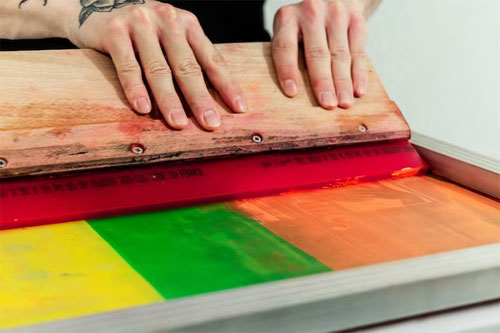
Textile Colouring
Reactive dyes for cotton and other natural fibers are widely utilized in the textile industry for their colouring properties on fabrics such as cotton, wool, silk, and others. They are also used to dye synthetic fibers such as polyester, nylon, and acrylic.
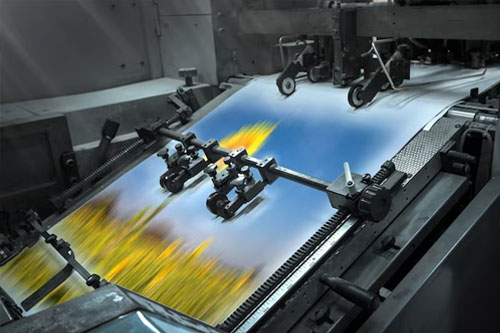
Printing
Reactive dyes can be used to print designs on fabrics using different printing techniques such as screen printing, roller printing, and inkjet printing.
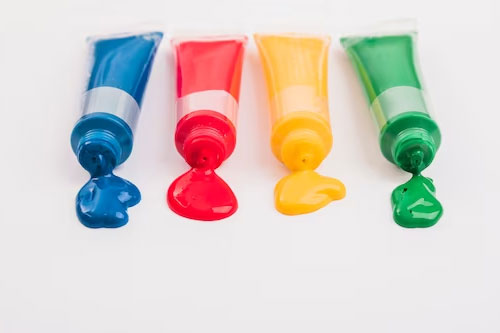
Paper Colouring
Reactive dyes are also used to colour paper and paper products. They are used in the production of paper for books, magazines, and other printed materials.
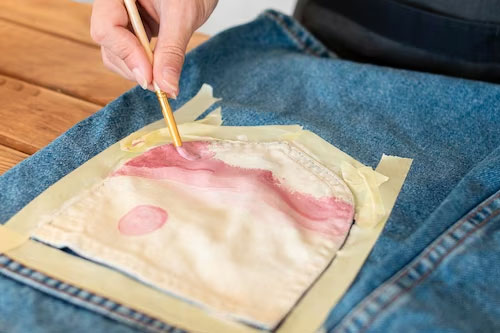
Leather Colouring
Reactive dyes are used to colour leather and leather products such as shoes, bags, and belts.
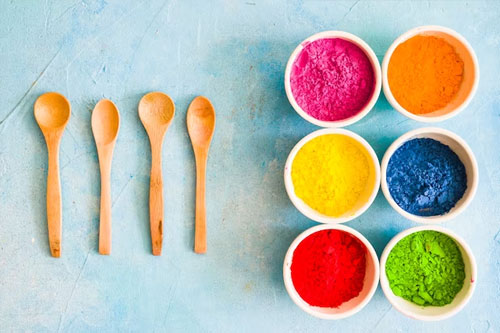
Food Colouring
Some reactive dyes are also used as food colouring agents, although their use in food is highly regulated and limited.
Overall, reactive dyes are versatile and widely used in various industries for their excellent colour fastness and durability.
About Megha International
Looking for a Reactive Dyes Exporter for brazil?
Megha International (ISO 9001: 2008) Established in the year 1995, at Mumbai, India is the best reactive dyestuff manufacturer that offers an extensive range of dyes in national as well as international markets. Our research and development team carries out constant studies to develop products that reliably set us apart from our competitors and serve our clienteles best. With a remarkable focus on innovation and leveraging new-age expertise, we endeavour to sustain and develop a leading organization on a global scale. The company is a top reactive dyes manufacturer in India, and is striving to deliver the finest quality of products to the consumers, while being environmentally sensitive.
Market Area of Megha International
As a prominent Vat Dyes supplier, Megha International is proud to export Vat Dyes in a wide range of countries across the globe. Our reach extends to many countries in Asia, including China, Vietnam, Singapore, Thailand, Malaysia, Korea, Philippines, Japan, and Indonesia.
We also serve clients in the Middle East, such as UAE, Saudi Arabia, Kuwait, Qatar, Iraq, and Iran.
In North Africa, we have clients in Algeria, Morocco, and Tunisia, while in Europe, we offer our services to Russia, the UK, France, Italy, Germany, the Netherlands, Romania, and Poland. In South America, we serve clients in Brazil, Argentina, Colombia, Peru, and Guatemala, as well as in Central America, including Mexico, Costa Rica, and Honduras.
Finally, we also provide our services to clients in the United States and Chile. No matter where our clients are located, we are committed to delivering high-quality dyes and exceptional customer service.
Frequently Asked Question about Vat Dyes
Vat dyes are most commonly used to dye cellulosic fibers, such as cotton and rayon, but can also be used on wool, silk, and some synthetic fibers under certain conditions.
Vat dyes are water-insoluble and require a special reduction-oxidation process to convert them into a soluble form that can be absorbed by the textile material. They also have excellent colour fastness and resistance to bleeding and fading.
Vat dyes can produce a wide range of colours, including deep and vibrant shades of blue, green, yellow, red, and brown.
Indigo is a type of vat dye that produces a deep blue colour and is commonly used in the dyeing of denim fabrics. It is derived from the leaves of the indigo plant, while other vat dyes are synthetic and derived from coal tar or petroleum.
Yes, vat dyes can be used for tie-dyeing, shibori, and other decorative techniques to create unique and vibrant patterns on textile materials.
Some vat dyes are derived from natural sources and are considered eco-friendlier than synthetic dyes. However, the dyeing process can still have negative environmental impacts if proper waste treatment and disposal methods are not followed.
No, vat dyes are not recommended for use in food contact applications as they may be harmful if ingested.
Vat dyes are generally resistant to bleach, although prolonged exposure to strong bleach solutions can cause some fading or discoloration.
